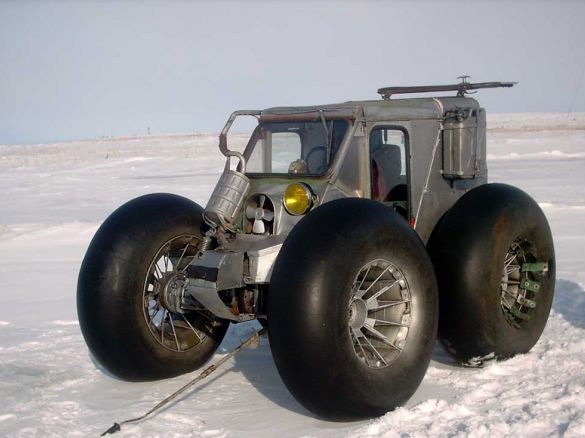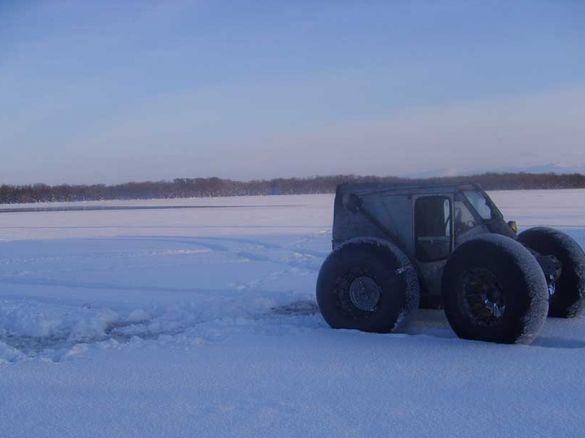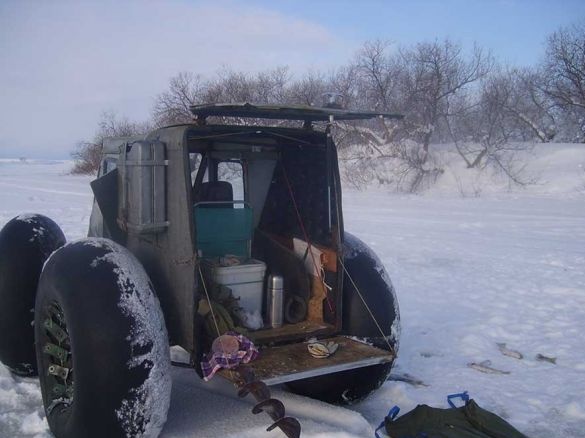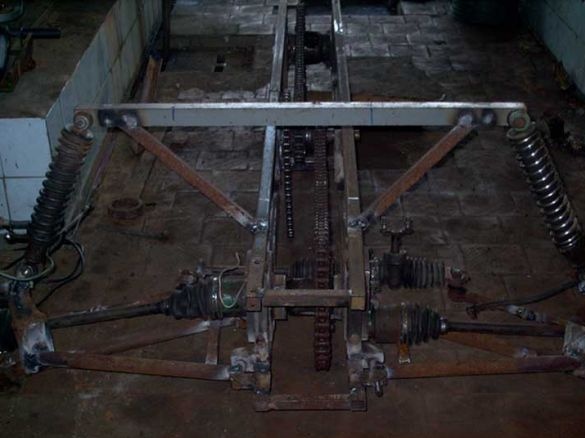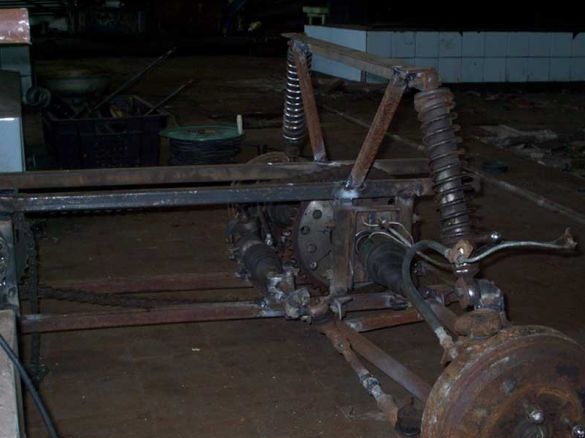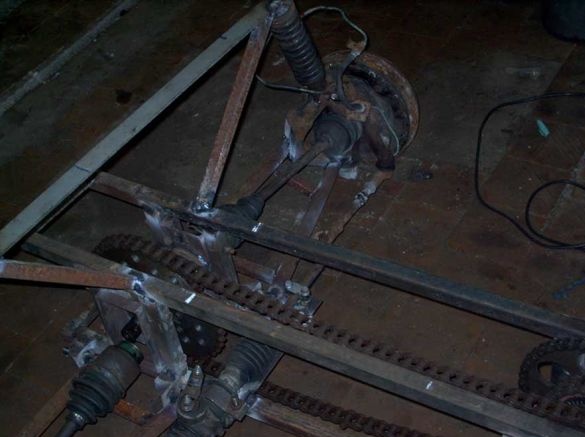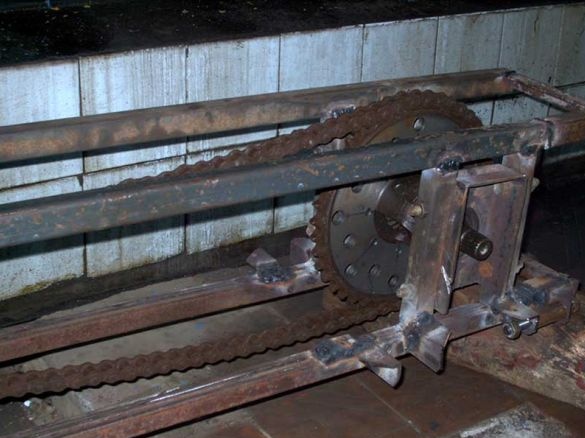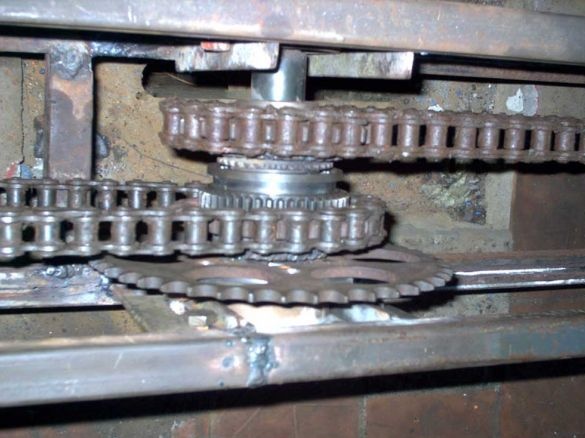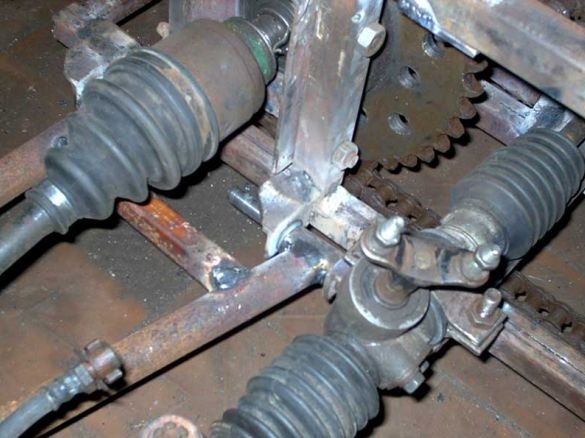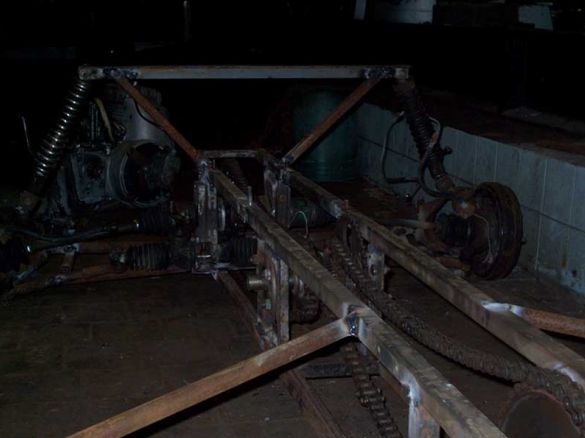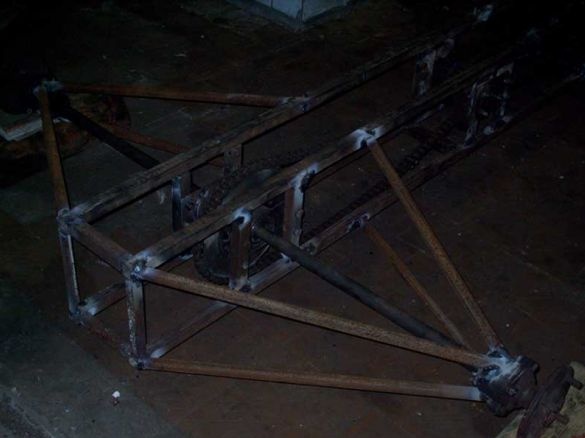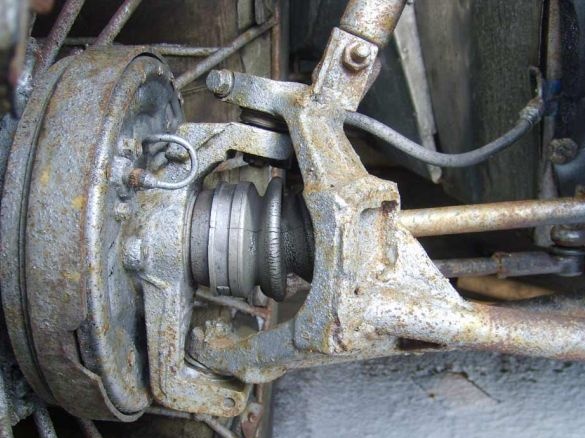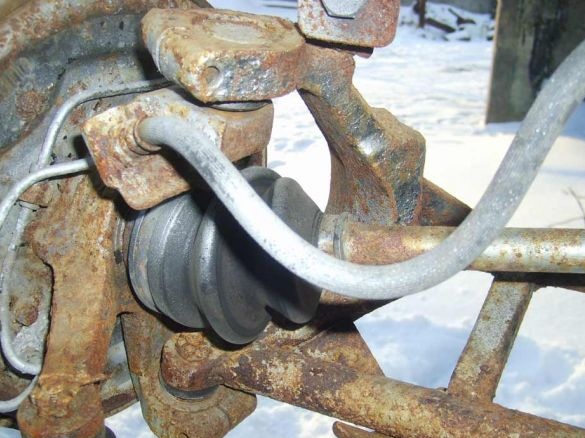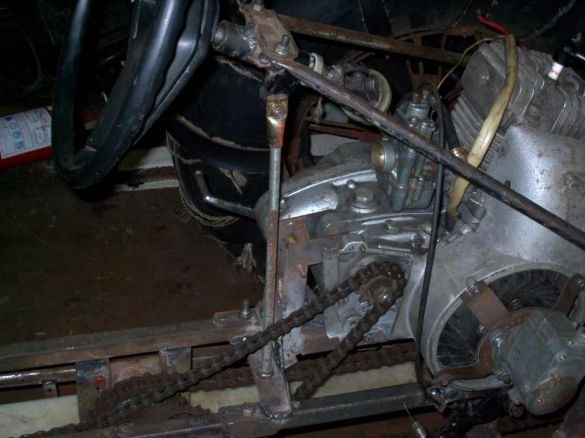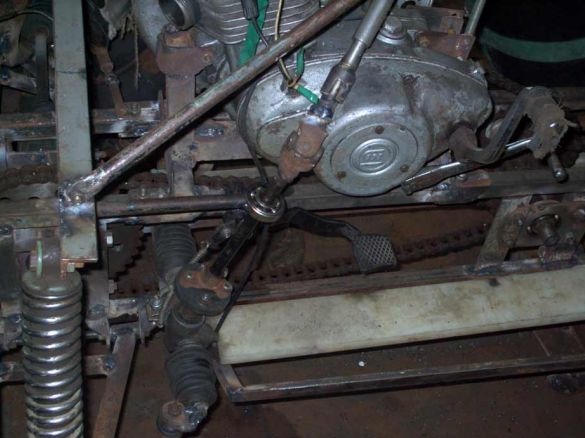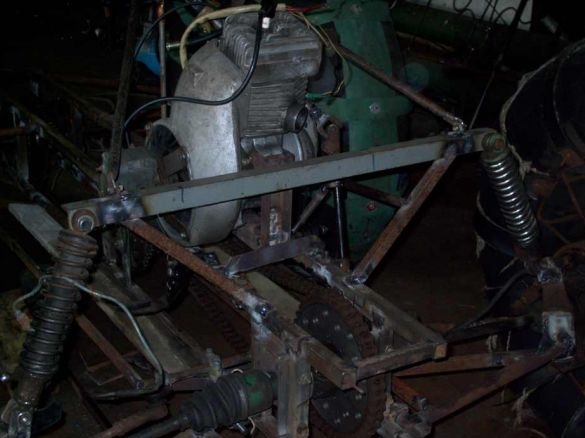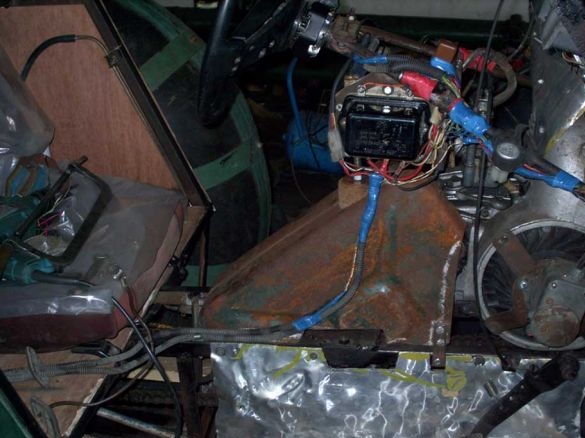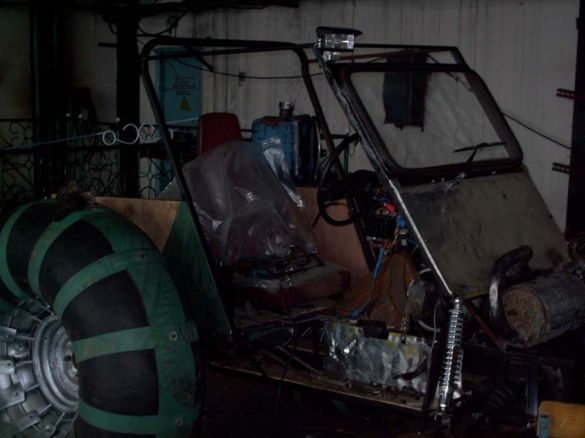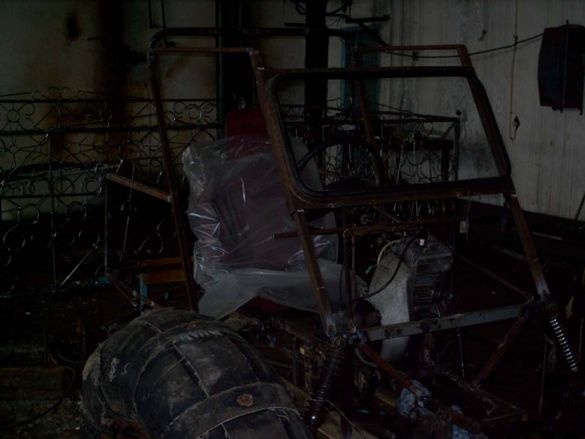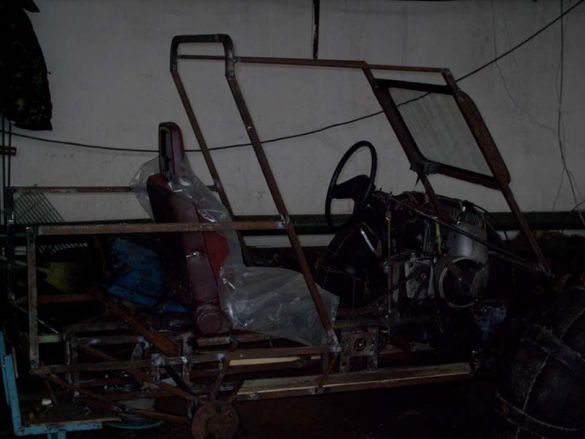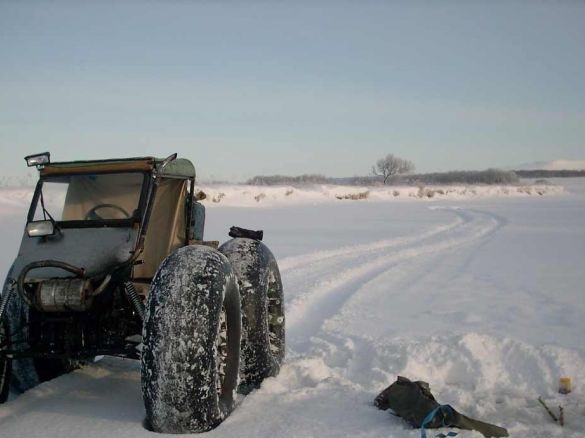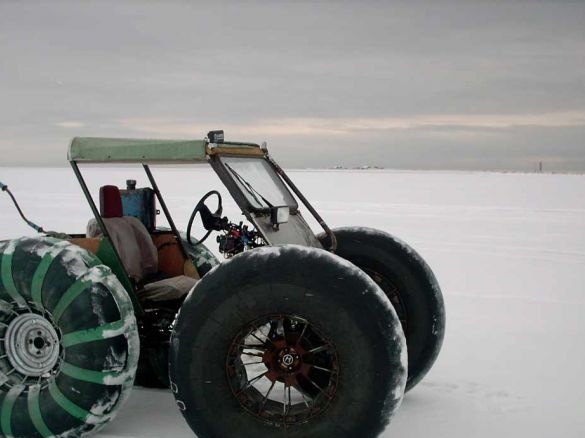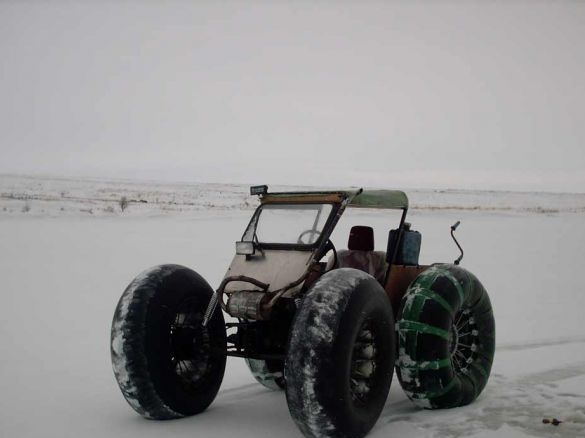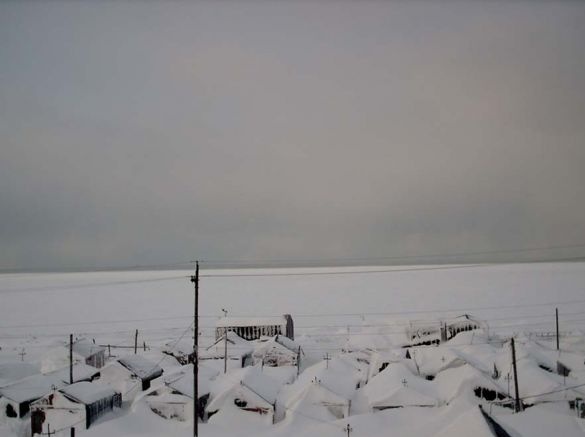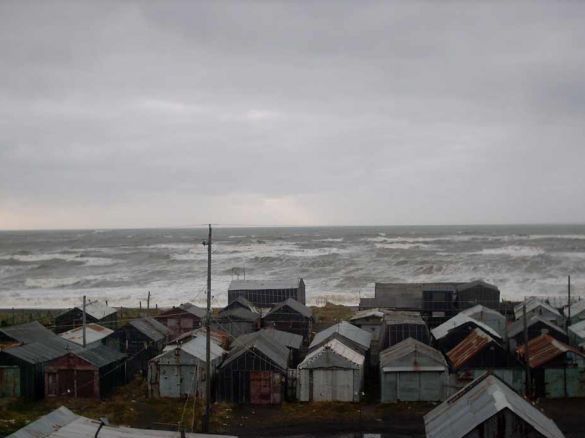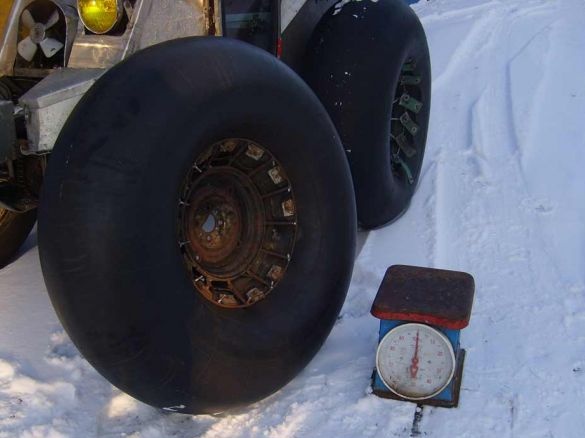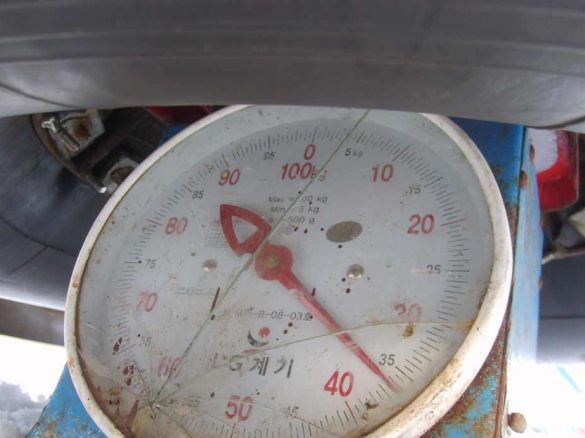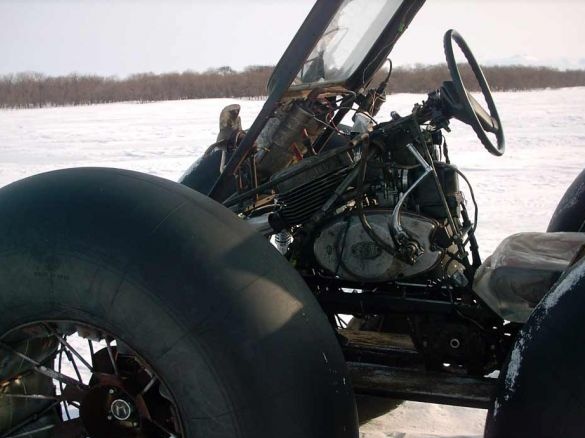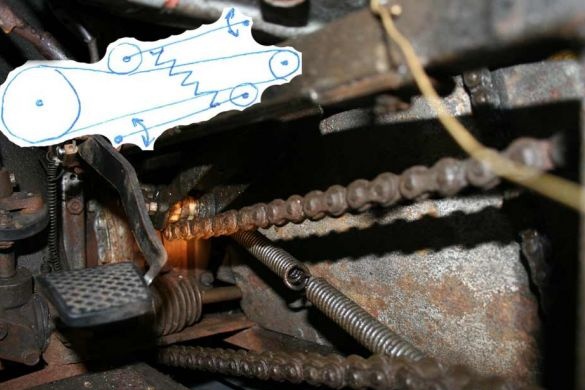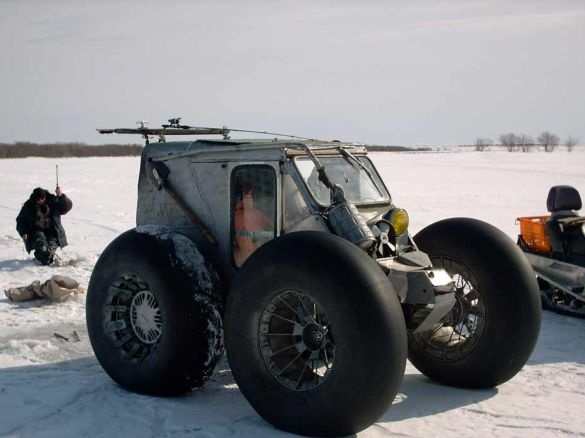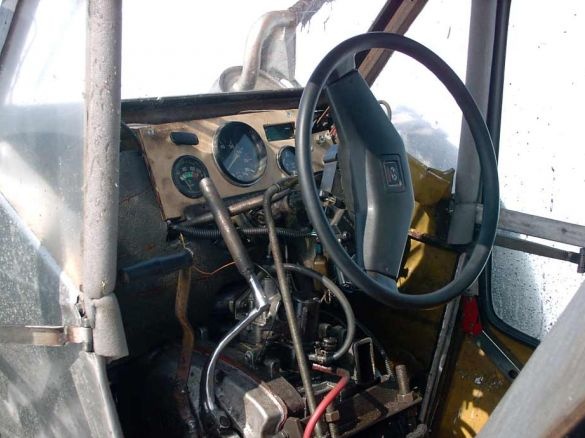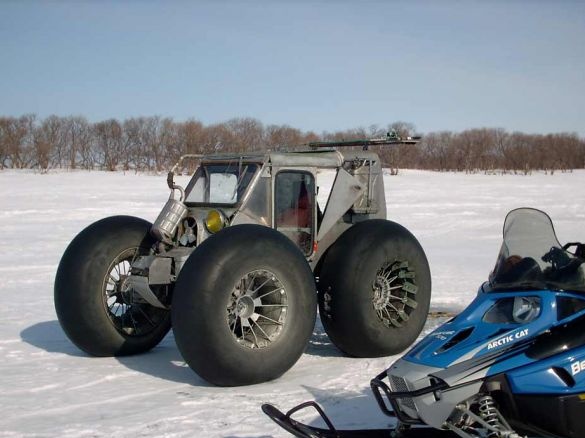The author of the next all-terrain vehicle has quite a lot of experience in assembling cars of different designs. Therefore essentially this all-terrain vehicle built professionally as a means of delivery for winter fishing. This property consists in the fact that you need to come, drill, go fishing and get home. Needless to say, this scheme eliminates breakdowns, since eliminating any malfunctions in winter on ice is not the best solution, which is why the author first of all adhered to the reliability of structures during construction. The fishing spot is not so far, a maximum of 40 km, so even in the event of a malfunction, the all-terrain vehicle can reach the garage.
At the very beginning of construction, the all-terrain vehicle was conceived as light pneumatics with the engine from the ant, but as construction progressed, changes were made.
What mechanisms were involved in the construction of the all-terrain vehicle:
1) The frame was assembled independently from a profile square pipe.
2) The internal combustion engine from IL, which was then replaced by Jupiter 5.
3) Disks removed from previously made ATVs
4) An electric fan for cooling with an unknown model of a Japanese subcompact.
5) rear differential with axle shafts from Toyota lit-ice,
6) front differential with axles and hubs from Subaru Sambar,
7) The steering wheel and steering rack from the same Subaru.
8) door glazing is borrowed from Honda Street.
9) the electric fan was removed from daihatsu charade.
What are the disadvantages of the design of this all-terrain vehicle:
1. there is no possibility of reversing .;
2. The engine is located inside the cab, hence the constant noise.
3. light load capacity;
4. There are simply no rear pendants.
Pros:
1) The design is extremely light
2) Soft and smooth wheels do not dig a hole in the ice, which makes it easy to overcome such obstacles, and allows
to go in any weather.
3) Swims slowly, easily goes to the sandy (rocky)
the shore, however, most likely will not leave on the ice itself.
As for cross-country ability, it rides in a puff coat until it snubs its face in the snow, then it starts to slip, but does not sit on its belly, you can roll it back,
or trample ahead (very difficult). Very good handling is also noted, the turning radius is less than that of the Niva, the exchange rate stability for such a short base is also good. The maximum speed of the all-terrain vehicle on a relatively acceptable road under 60km \ hour.
The essence of the all-terrain vehicle is quite simple: the chain from the engine goes to the countershaft, and from it to the rear and front differentials. The design feature is that the front axle has the ability to disable.
Let's move on to the phased construction of the all-terrain vehicle.
To begin with, the all-terrain vehicle frame was assembled, it was built of square pipes, and then the main elements were already inserted into it. Therefore, the dimensions were taken after the action without drawings and diagrams. Then the all-terrain vehicle suspension and steering were assembled.
When installing the rear of the all-terrain vehicle, the idea was to make depreciation, however, in order to please the prostate, and therefore the reliability of the structure, it was decided to abandon it. In addition, the all-terrain vehicle was much easier.
And here is the front view of the hub:
Here is the back mount:
The next step was the installation of an internal combustion engine, and the steering wheel was adjusted to the convenience of the author. It is interesting that the steering shaft had to be made a composite structure on the universal joints. Well, only then the author began to weld a common frame under the cab and body. Moreover, the wheel disks were taken from earlier designs, and they are slightly different in size.
The cameras are taken in the size of 1200/500 508.
In the images below, the basic work on installing the frame is being done.
The design of the model is pretty good. Another important detail, the author specifically decided to limit the carrying capacity of this all-terrain vehicle. Again, this was done in order to enhance the reliability of the all-terrain vehicle, so as not to overload the structure with unnecessary load.
After the test races, it was decided to change the star of the intermediate shaft from Izh to a larger star.
But by the way, photos of the terrain in which the all-terrain vehicle will be operated.
It hasn’t gotten much snow yet:
In autumn it looks like this:
As originally conceived, the technique turned out to be quite easy, just one person is enough to raise the front and back in turn, and at the same time rearrange it from side to side.
This was achieved due to the unrealistically low weight of the structure of 300 kg.
But unfortunately there were also disadvantages, for example, the engine was weak in deep snow, so it was decided to sacrifice weight for the sake of a more powerful motor from Jupiter 5.
The wheel assembly was weighed:
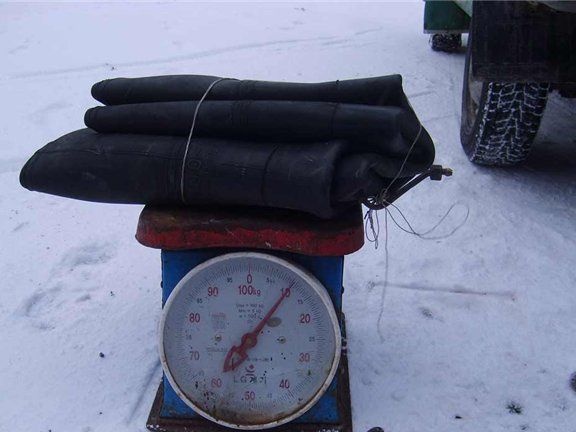
Disc on the scales:

The rims on the front wheels are different in diameter, external and internal, experimented with the construction. The rear wheels are the same. No big difference is observed.
For cooling, an electric fan was added from the radiator of a small Japanese car.
And warm air from the engine was sent to heat the windows. Independent brakes were also installed on the left and right front wheels, this was necessary to overcome the diagonal hanging.
After such upgrades, the front of the car became significantly heavier, but the dynamics and speed gave the necessary qualities, thanks to the new engine.
Since the disks were taken from previous models of all-terrain vehicles, it was decided to slightly upgrade the wheels:
Chain tensioners were also installed on the long levers connected
springs:
Once the same increased mass affected, when the karakat rolled over on its back, lifting it alone was no longer within the power, but the two of us coped easily.
Another time, the author rode along an inclined ice fast ice, and the all-terrain vehicle pulled sideways into the river, and even the chain fell off. But comrades came to the rescue :( photo taken from a cell phone)
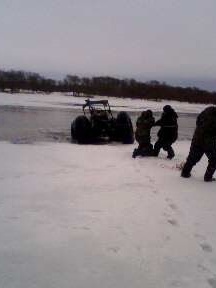
After such adventures, the author came up with the idea to install a winch on this all-terrain vehicle, and close the body for more comfort when traveling. Also, in order to increase driver comfort, doors were made, a sunroof connected to the radio. After such modifications, you can forget about the solo raising of equipment, but then the opportunity and convenience of movement appeared as in car.
During operation, the following problems were identified for the all-terrain vehicle:
1) the engine principle does not correspond to this design, if the wind is not opposed to movement, then the engine is not cooled enough, and you have to make stops, and sometimes even turn forward in front of the wind in order to quickly cool the unit.
As a result, it was decided that the design of this karakat is not suitable for use with heavy loads, there is no way to use the lugs on wheels with the all-wheel drive version for a long time, as this can lead to transmission failure.
The author of this all-terrain vehicle: "muanchik" from Kamchatka.

